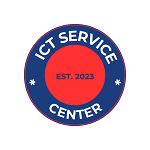The most common ICT tool is the computer. It is used by individuals and organizations worldwide.
ICT tools play a crucial role in both personal and professional settings. Among the different ICT tools available, the computer stands out as the most common and widely used. From personal use for communication and entertainment to professional use for data processing and analysis, computers have become an essential part of everyday life.
Additionally, with the evolution of technology, the integration of various software and applications has further enhanced the functionality and versatility of computers as an ICT tool. As a result, the computer’s ubiquity and adaptability make it the most common choice for individuals and businesses alike when it comes to ICT tools.

Credit: unctad.org
Defining ICT Tools
Importance Of ICT Tools In Modern Society
In the contemporary world, ICT tools hold paramount significance in transforming how we live, work, and communicate. These tools have revolutionized various aspects of society, enabling seamless communication, efficient data management, and enhanced productivity.
Types Of ICT Tools
When it comes to ICT tools, they can be broadly categorized into hardware, software, and network tools, each serving distinct purposes and functions.
Hardware Tools
Hardware tools encompass physical devices such as computers, servers, routers, and other peripherals that form the core infrastructure for information and communication technologies.
Software Tools
Software tools are the applications and programs that enable users to perform various tasks, from word processing and data analysis to complex graphic design and project management.
Network Tools
Network tools comprise the technology and protocols essential for establishing and maintaining communication networks, such as routers, switches, firewalls, and other networking devices.
Exploring The Most Prevalent ICT Tool
In today’s digital age, Information and Communication Technology (ICT) has become an integral part of our daily lives, revolutionizing the way we communicate, work, and access information. Among the vast array of ICT tools available, one stands out as the most common and widely used across various industries. Let’s delve into the details of this ubiquitous tool and explore its impact on our daily lives, its role in different industries, features, functionalities, ease of use, accessibility, versatility in applications, and integration with other technologies.
Overview Of The Most Common ICT Tool
The most common ICT tool that has seamlessly integrated into our daily lives is the smartphone. With its multifunctional capabilities, including calling, messaging, internet browsing, and an extensive range of downloadable applications, the smartphone has become a ubiquitous device that empowers users with instant access to information, communication, and entertainment.
Role And Impact On Daily Life
The smartphone has significantly transformed the way people communicate, access information, and perform daily tasks. From staying connected with family and friends to managing personal and professional tasks, the smartphone plays a pivotal role in streamlining daily activities and enhancing productivity.
Ubiquity In Various Industries
Smartphones have permeated through various industries, ranging from healthcare and finance to entertainment and education. Their seamless integration with innovative apps and services has led to enhanced efficiency and convenience in diverse sectors.
Main Features And Functionalities
The smartphone offers a wide array of features and functionalities, including high-resolution touchscreens, advanced cameras, various sensors, GPS navigation, voice recognition, and powerful processors, enabling users to perform diverse tasks with ease.
Ease Of Use And Accessibility
Its user-friendly interface, intuitive design, and accessibility features make the smartphone accessible to individuals of all ages and technological proficiency levels. Its portability and ease of use further contribute to its widespread adoption.
Versatility In Applications
With a vast ecosystem of mobile applications, the smartphone serves as a versatile tool for entertainment, productivity, health tracking, communication, and more, catering to a wide range of user needs and preferences.
Integration With Other Technologies
The smartphone seamlessly integrates with various technologies, such as wearable devices, IoT (Internet of Things) devices, smart home systems, and cloud services, creating a connected ecosystem that enhances overall user experience and productivity.
Applications Of The Most Common ICT Tool
The most common ICT tool, the computer, is widely used for various applications. It is utilized for communication, data management, research, education, entertainment, and business operations. With its versatility, the computer has become an essential tool in modern society, serving a wide range of purposes.
The Role Of The Tool In Education
The most common ICT tool, known as the computer, plays a pivotal role in education, revolutionizing the way students learn and teachers instruct. With the integration of computers into the educational framework, students gain access to a plethora of educational resources and opportunities for interactive learning.
Impact On Teaching And Learning Processes
Computers have significantly impacted teaching and learning processes, facilitating multimedia presentations, e-learning, and interactive tutorials that cater to diverse learning styles. This fosters a dynamic learning environment that encourages critical thinking and knowledge retention.
Enhancement Of Educational Experiences
The widespread use of computers enhances educational experiences by offering a platform for immersive simulations, virtual field trips, and collaborative projects, allowing students to engage with the material in a more profound and personalized manner.
Utilization In The Business Sector
In the business sector, computers play a pivotal role in streamlining operations, managing data, conducting market research, and fostering innovation. Additionally, they facilitate communication, collaboration, and efficient information management.
Advantages For Businesses And Organizations
The utilization of computers provides businesses and organizations with significant advantages, including improved productivity, automation of tasks, enhanced decision-making processes, and the ability to analyze large volumes of data for informed business strategies.
Support For Communication And Collaboration
Computers support communication and collaboration within and across organizations through email, video conferencing, project management tools, and collaborative platforms, fostering efficient teamwork and knowledge sharing.
Influence On Personal Productivity
Computers significantly influence personal productivity by providing access to a myriad of productivity tools, time management applications, and digital resources that aid individuals in achieving their personal and professional goals.
Facilitation Of Day-to-day Tasks
Computers facilitate day-to-day tasks such as scheduling, communication, research, and document management, simplifying routine activities and improving overall efficiency.
Management Of Personal Information And Data
Computers play a vital role in the management of personal information and data, offering secure storage, organization, and retrieval of essential documents and digital assets, ensuring data accessibility and security.
Evolution And Future Of The Most Common ICT Tool
Evolution and Future of the Most Common ICT Tool
Development Over The Years
In the fast-paced realm of Information and Communication Technology (ICT), the most common ICT tool has undergone a remarkable evolution through the years. From its humble beginnings to its current state, this tool has experienced significant technological advancements and has become an essential component of modern society.
Historical Context And Significant Milestones
The historical context of the most common ICT tool is marked by significant milestones that have shaped its development. From the emergence of the first prototypes to the widespread adoption of the tool in various industries, its journey has been marked by groundbreaking advancements and innovations.
Technological Advancements And Improvements
The most common ICT tool has seen substantial technological advancements and continuous improvements, driving its capabilities to new heights. The integration of cutting-edge technologies has significantly enhanced its performance, responsiveness, and user experience, paving the way for new possibilities and applications.
Foreseeing The Future
Looking ahead, the future of the most common ICT tool holds immense potential for further innovation and progress. With ongoing research and development efforts, it is poised to revolutionize the way we interact with technology, paving the way for a new era of connectivity and efficiency.
Potential Innovations And Enhancements
The future of the most common ICT tool promises potential innovations and enhancements that will redefine its capabilities. From advancements in artificial intelligence to seamless integration with emerging technologies, the possibilities for enhancement are limitless, setting the stage for a dynamic and transformative future.
Anticipated Impact On Society And Industries
The anticipated impact of the most common ICT tool on society and industries is profound, with the potential to drive unprecedented levels of efficiency, connectivity, and innovation. Its evolution and future advancements are expected to catalyze transformative changes across various sectors, shaping the way we live, work, and interact in the digital age.
Maximizing The Potential Of The Most Common ICT Tool
The most common ICT tool is a crucial component of modern business operations and personal productivity. By harnessing its potential to the fullest, businesses can streamline operations, increase efficiency, and enhance collaboration. Let’s explore some effective strategies for maximizing the potential of this ubiquitous tool.
Tips For Effective Utilization
1. Regular Training: Continuous training and upskilling of employees is essential to keep them updated with the latest features and functionalities of the tool.
2. Customization: Encourage users to customize the tool to fit their specific needs and workflow, maximizing its utility for individual and team tasks.
Best Practices For Utilizing The Tool
1. Standardized Workflows: Establish standardized procedures for using the tool to ensure consistency and efficiency across different departments and teams.
2. Collaboration Tools Integration: Integrate the tool with collaborative platforms to facilitate seamless communication and project management.
Enhancing Proficiency And Efficiency
1. Shortcut Familiarization: Promote the use of keyboard shortcuts and other time-saving features to enhance user proficiency and efficiency.
2. Automation Implementation: Identify repetitive tasks that can be automated within the tool, freeing up time for more strategic activities.
Overcoming Challenges And Limitations
1. Comprehensive Support Resources: Provide comprehensive support resources, including FAQs, tutorials, and user forums, to help users overcome common challenges and limitations.
2. Feedback Channels: Establish feedback channels to gather insights from users about the tool’s limitations and areas for improvement.
Addressing Common Issues And Obstacles
1. Regular Updates: Ensure the tool is regularly updated to address security vulnerabilities and performance issues.
2. User Training Programs: Offer specialized training programs to address common user issues and obstacles, fostering a more proficient user base.
Improving User Experience And Performance
1. Performance Optimization: Conduct regular performance assessments and optimizations to ensure the tool operates at peak efficiency.
2. User Feedback Integration: Incorporate user feedback into the tool’s development roadmap, prioritizing features and enhancements based on user needs.
Frequently Asked Questions;
What Is An ICT Tool And Its Importance?
An ICT (Information and Communication Technology) tool is any device or application used to access, manage, integrate, transmit, and evaluate digital information. ICT tools are essential for communication, data management, and learning in modern society.
What Are The Types Of ICT Tools?
Common ICT tools include computers, smartphones, tablets, software applications, social media platforms, and educational resources. Each type of ICT tool serves a specific purpose and contributes to the efficiency and productivity of its users.
How Do Ict Tools Benefit Education?
ICT tools enhance learning experiences by providing access to a wide range of educational resources, facilitating collaboration among students, promoting interactive learning, and catering to diverse learning styles. They also help educators organize and present information in engaging ways.
Conclusion
While there are several ICT tools available, the most common one is the computer. Its versatility and wide range of applications make it indispensable in both personal and professional settings. As technology continues to advance, the use of computers in various forms will only continue to grow and evolve.

